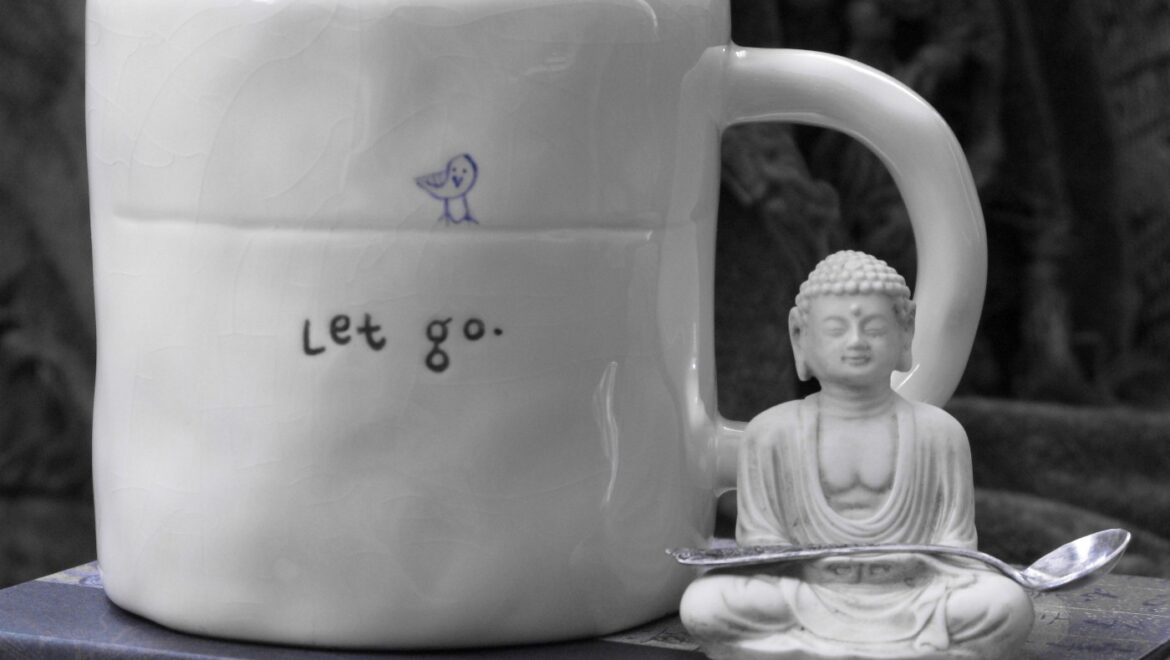
I’m usually reluctant to write about Buddhism. It’s not that I have anything against it (I don’t). My reluctance stems from my lesser familiarity with it compared to many readers out there (I’m thinking of you, Sandra Pawula!).
Mostly this is about common misunderstandings of what the Buddha had in mind when teaching about suffering. It’s a misunderstanding I had up until recently.
By the way, the following may sound uber-obvious to some of you, but I know I wasn’t clear on it until recently, so bear with me Buddhism experts.
The Four Noble Truths
Let’s start with a quick summation of the heart of Buddhism: The Four Noble Truths.
Those are:
1. All life is suffering.
2. Suffering is caused by desire.
3. Eliminate the desire and we eliminate the suffering.
4. Eliminate the desire by following the Eightfold Path.
The mistake many make is immediately equating suffering with our conception of it: agonizing starvation of kids in Africa, people slaughtered in wars, painful chemotherapy treatments and the like. In other words, severe suffering.
But that’s not what the Buddha had in mind. It’s part of it, but not the main part of suffering.
Sex and drugs are a small part of desire
He said that suffering comes from desire, which brings up another misnomer. Most people go straight to desiring sex, drugs, great food, etc. Yes, that’s a part of it.
But the bigger, more expansive truth of it is that it means wanting things to be a certain way. It’s about, as Michael Singer says, wants, or preferences.
Desires are also about what we don’t want
And there’s yet another misnomer here. Because Buddha didn’t think it was only our wants that cause suffering. It’s also, again as Michael Singer says, our not-wants.
Here’s an example that will illuminate. We desire/want the job opening at Google. Once we get that job, we desire/not-want that we don’t get fired.
The Buddhists call this craving (what we want) and aversion (what we don’t want). Buddhism’s core tenet is that it is all this craving and aversion that causes suffering.
What type of suffering are we talking about?
Which leads us to the key point of this article. What does that suffering look like? How does it manifest?
As I said earlier, I and many others, automatically equate suffering with the extreme kinds mentioned earlier. But here is how I would describe the universal kind of suffering the Buddha was talking about:
A persistent, near constant feeling of unease.
That is the suffering we endure when our lives are spent wanting and “not-wanting.”
Understanding it this way makes Buddha’s main teaching profoundly beneficial and useful to all of us. Why?
Because it concentrates our attention where it needs to be. And that is decidedly not on getting what we want and avoiding what we don’t want, which is how 99 percent of all humans live.
Rather, it teaches us to focus our lives on letting go of our attachments to what we want and don’t want.
Attachment is crucial
That word attachment is vital. Because all humans are going to have wants and not-wants.
My favorite personal example is that I really liked my beer mug I bought at the Masters golf tournament many years ago. I used it frequently for at least five years. Then one day, because I kept in it the freezer and it had ice on the bottom, when I put it on the counter and turned away, it slid off and smashed into a hundred pieces.
I was bummed about it, but not overly so. Why? Because I liked that mug, but I wasn’t attached to it.
Where we want to end up
That’s the place we want to get on everything in our lives. I like my job, but if I get fired, I’ll be okay. I’m not attached to it.
The waitress just told me they’re out of the grilled pork chop I ordered. That’s okay. I’m not attached to it. I’ll be fine with the salmon.
When we live like that, the persistent feeling of unease (AKA suffering) diminishes. And we feel better.
As the Third Zen Patriarch famously wrote:
“The great way is not difficult for those who have no preferences.”
But we can’t stop there. Why? Because we can’t eliminate our wants and not-wants by simply wishing them away.
First, we have to understand why they’re there in the first place. Why is it that we constantly want and not-want?
Ego is behind our wants/not-wants
The answer is that we’ve all built up this thing called an ego. It’s the compilation of all the things we’ve experienced that we didn’t let go of. That we held on to. It is those “stuck” experiences that determine what we want and what we don’t want.
Coming full circle, letting go of that egoic baggage (the yoga tradition would call these Samskaras) is the key to ending our suffering/general unease.
Getting quiet inside, through meditation, mindfulness and other spiritual practices, enhances our ability to let go. So we make those a priority.
The takeaway
What’s the long and the short of all this? That 2,500 years ago the Buddha got it right. That virtually everybody feels some level of anxious/not quite right most of the time. That’s the suffering part.
And we all feel this “dis-ease” because we spend all day every day wanting and not wanting (desiring).
My hope is that this clarification of the basics of this ancient, revered spiritual tradition will strengthen your basic understanding of what’s going on inside us.
And that you will use that understanding to sharpen your focus on the most important work we humans need to do:
Letting go.

0 comments
Write a comment